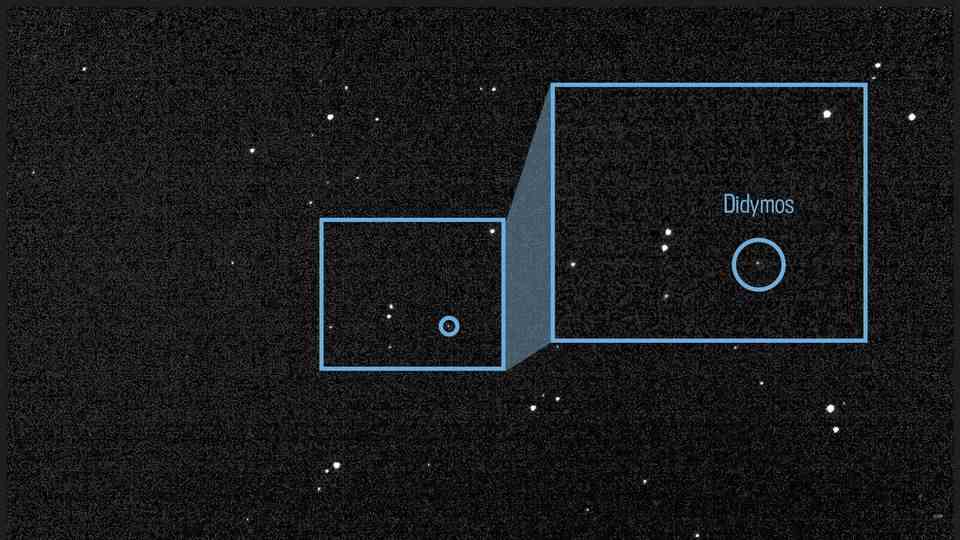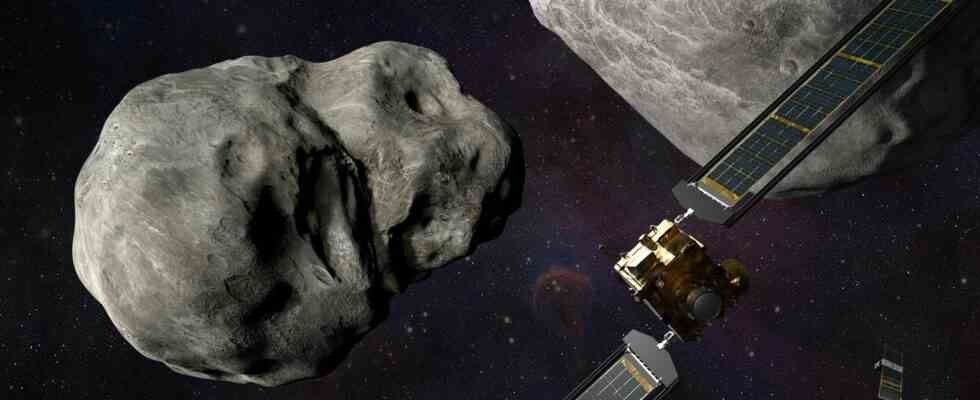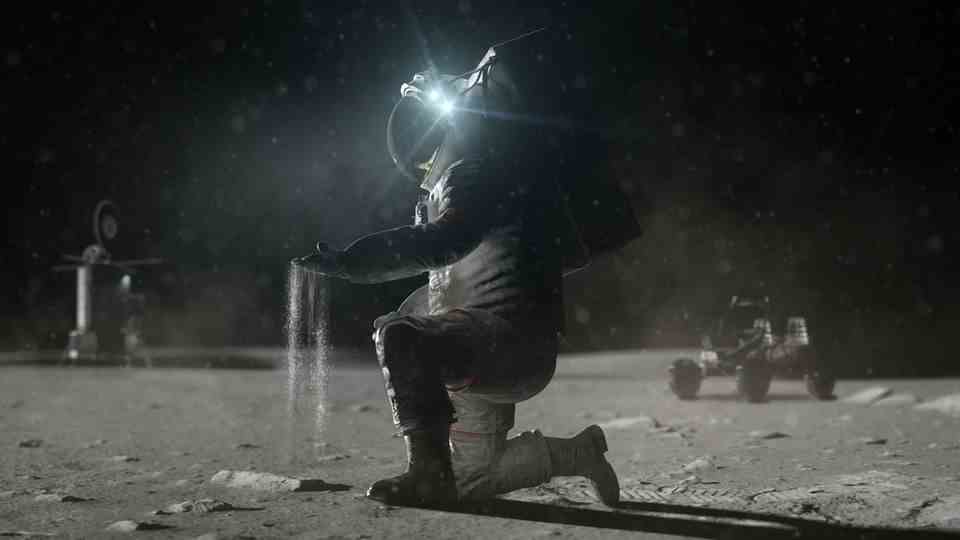“Dart” mission
Defense against an asteroid: With a spectacular crash, NASA tries to save the earth
STORY: NASA wants to see if you can divert an asteroid from a collision course with Earth by crashing a spacecraft into it, as a kind of planetary defense system. Andrea Riley is one of those responsible for the Double Asteroid Redirection Test, DART for short. “We are constantly on the lookout for potential threats. This test is designed to show us whether we have a damage control strategy should such a threat ever be detected. The probe was launched from California last November. The target is an asteroid called Dimorphos, barely 170 meters long. It is to be tested whether the trajectory of the asteroid can be changed with pure kinetic force by flying into it at high speed. The chunk should change its course just enough so that our planet is not endangered. At least It’s tiny compared to the asteroid that killed the dinosaurs 66 million years ago, but DART Coordinator Nancy Chabot says smaller asteroids are more common and theoretically be a bigger problem.” It could wreak regional havoc, for a city or a small one Country. But this is very rare and there is no known threat. But the size of Dimorphos is perfect for such a test.” Cameras on the probe and one nearby will record everything up to a second and a half before impact, according to systems engineer Elena Adams. You’ll see the impact in real time. The big one Mission finale is scheduled for September 26th.
Sooner or later, the Earth will be threatened by the impact of a large asteroid. The astronauts want to be prepared for this catastrophe. With the “Dart” mission, the asteroid defense is rehearsed. It’s getting serious this Monday.
It is about nothing less than the security of the earth and the survival of mankind. In principle, it can happen at any time that a large asteroid is discovered that is on a collision course with our planet. So large that an impact would cause such devastation that the survival of mankind is in question. The astronauts want to be prepared for this dramatic moment. NASA’s “Dart” (Double Asteroid Redirection Test) mission is a first concrete step.
What sounds like something out of a Hollywood film is a real project: next Monday (September 26) a probe from the US space agency is to crash directly and intentionally into an asteroid for the first time, thereby changing its trajectory. “‘Dart’ is the first mission that tries to use a direct experiment to push a dangerous object out of the way,” says NASA Director of Science Thomas Zurbuchen.
Can the trajectory of an asteroid be changed?
All of this is strongly reminiscent of Hollywood films such as “Armageddon – The Last Judgment”, in which in 1998 stars such as Bruce Willis and Ben Affleck destroyed an asteroid that was heading straight for earth in a very short time using a complicated and dangerous maneuver. But: NASA’s mission, which costs around 330 million dollars, is unmanned and the target asteroid Dimorphos is not racing towards Earth either, but according to NASA’s calculations it currently poses no danger. It is a first cautious attempt to see if it is possible could be to change the trajectory of an asteroid in this way. NASA hopes to gain insights into how the earth could be protected from approaching asteroids.
The space agency has been dealing with this for many years. An asteroid impact around 66 million years ago, for example, is considered by scientists to be the leading theory as to why the dinosaurs became extinct. Scientists don’t currently know of any asteroid that could be heading straight for Earth any time soon, but researchers have identified around 27,000 asteroids near our planet, including around 10,000 with a diameter of more than 140 meters.
“Dart” is targeting Dimorphos
The “Dart” probe, launched in November from the US state of California with the help of a “Falcon 9” rocket, has been on its way to its target for around ten months. “Asteroid Dimorphos: We’ll get you,” Nasa tweeted shortly after launch. According to NASA, the probe will only be able to target Dimorphos with its camera about an hour and a half before the impact. Directing the flying object precisely into the asteroid is “incredibly challenging,” says NASA manager Evan Smith.

First view of the “Dart” probe on its target asteroid Didymos and the orbiting moon Dimorphos (blue circles).
© Nasa JPL DART Navigation Team
About 160 meters in diameter, Dimorphos is a type of moon of the larger asteroid Didymos. The mission is designed in such a way that both asteroids should not pose any danger even after the impact of the probe, which only has one camera on board.
Test in time before it gets really serious
After the impact, Dimorphos’ approximately 12-hour orbit is expected to be at least 73 seconds shorter and possibly up to 10 minutes shorter. For the scientists, the real work then begins: investigating what exactly happened before, during and after the impact – and what that could mean for protecting the earth. The data during the impact will be collected by the small cube satellite LICIACube, a contribution of the Italian space agency ASI to the mission. In 2024, the ESA mission “Hera” should start for even more detailed investigation, which Queen guitarist and astronomer Brian May explains in more detail:
But first, “Dart” does the preliminary work. It is a “test mission,” emphasizes Nasa Manager Andrea Riley. “Even if we don’t score, we’ll still be able to collect a lot of data. That’s why we’re testing. We want to do it now and not when there’s a real problem.”


